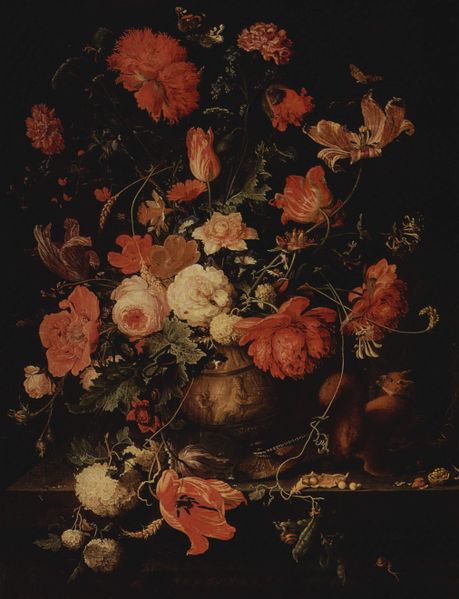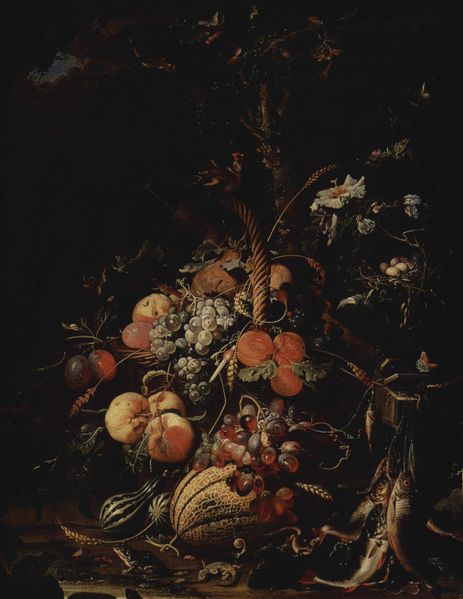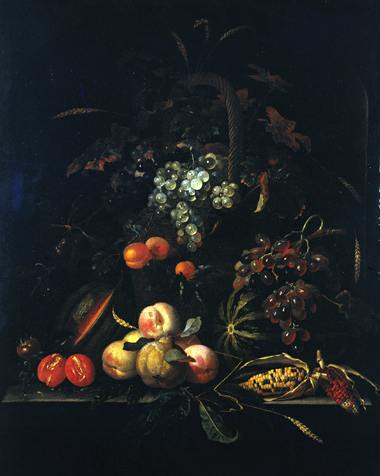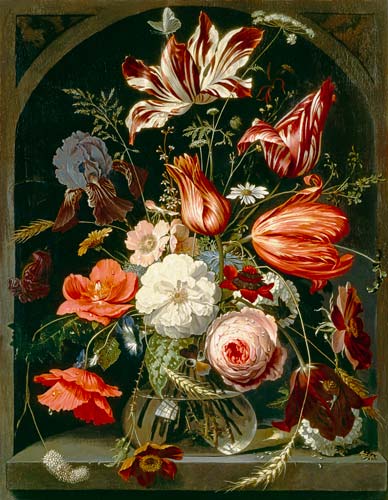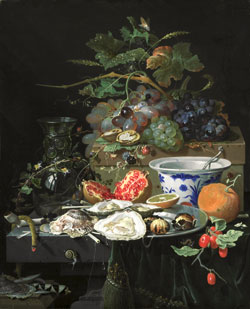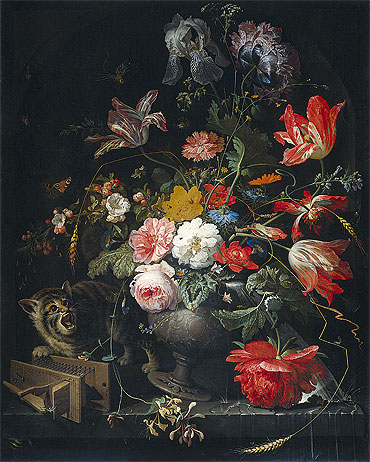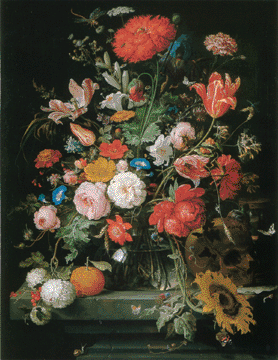<Back to Index>
- Philosopher Jean Paul Charles Aymard Sartre, 1905
- Painter Abraham Mignon, 1640
- Prime Minister of Italy Giovanni Spadolini, 1925
PAGE SPONSOR
His father, a Frankfurt merchant, placed him under the care of the still life painter Jacob Marrel, when he was only seven years old. Marrel specialized in flower painting, and found him to be his best pupil. He accompanied Mignon when he moved to the Netherlands about 1660 to work under Jan Davidszoon de Heem at Utrecht. In 1675 he settled there for good when he married the daughter of the painter Cornelis Willaerts (granddaughter of Adam Willaerts).
Marrel's stepdaughter Maria Sibylla Merian (1647 – 1717), daughter of the engraver Matthew Merian, who lived with Marrel and thus studied with Mignon, achieved distinction as a flower painter. Mignon
devoted himself almost exclusively to flowers, fruit, birds and other
still life, though at times he also attempted portraiture. His flower
pieces are marked by careful finish and delicate handling. His
favourite scheme was to introduce red or white roses in the centre of
the canvas and to set the whole group of flowers against a dark
background. Nowhere can his work be seen to better advantage than at the Dresden Gallery, which contains fifteen of his paintings, twelve of which are signed. Six of his pictures are at the Louvre, four at the Hermitage, and other examples are to be found at the museums of Amsterdam, The Hague, Rotterdam, Brussels, Munich, Karlsruhe, Brunswick, Kassel, Schwerin, Copenhagen, Warsaw, Lyon, Florence and Turin.
